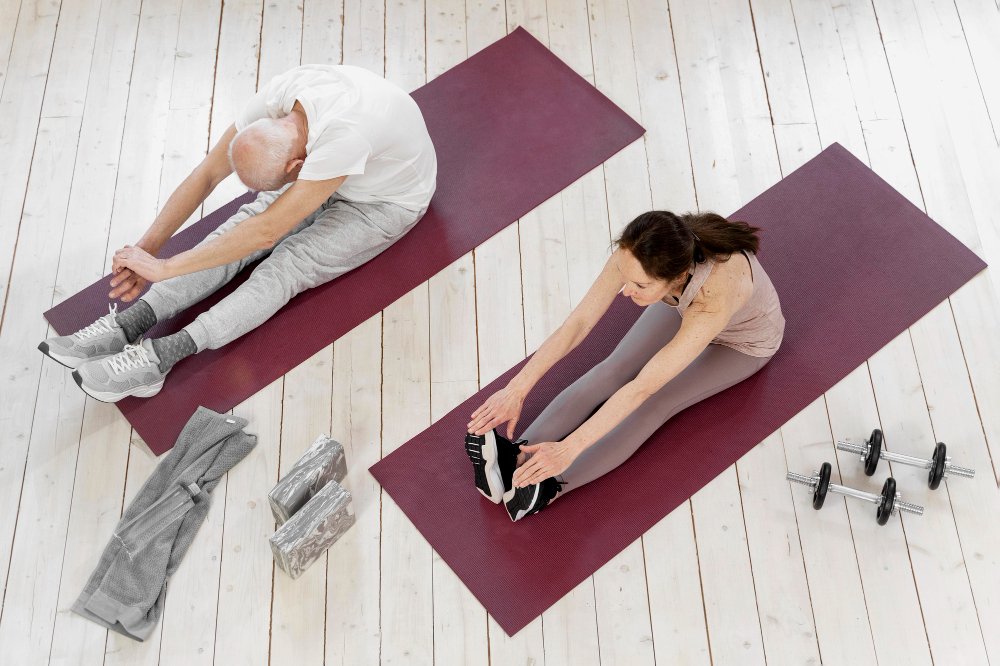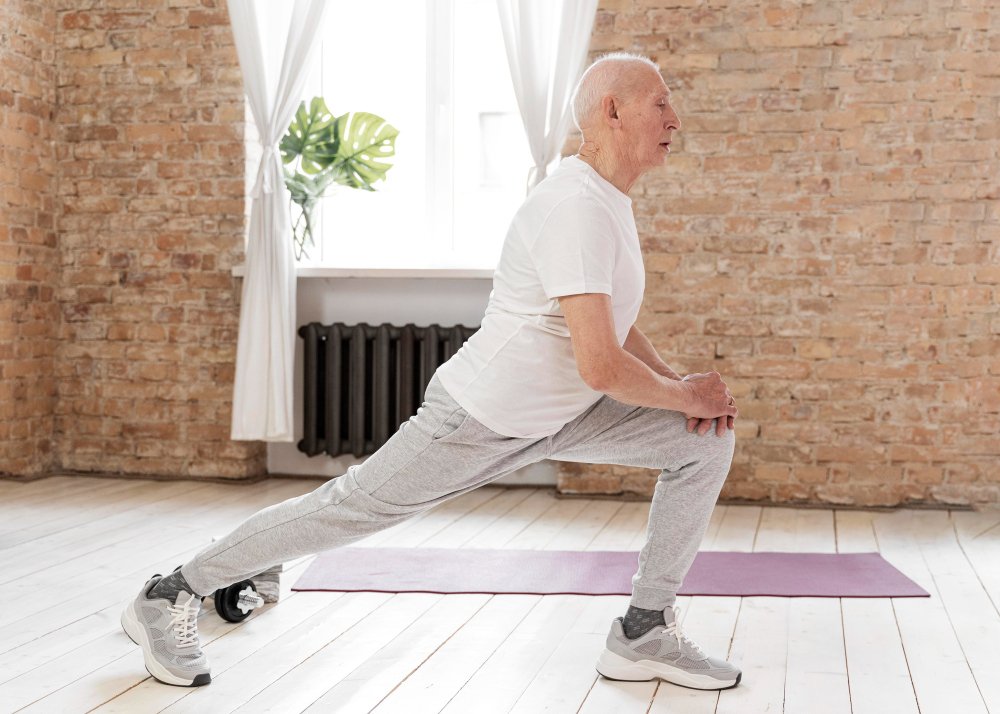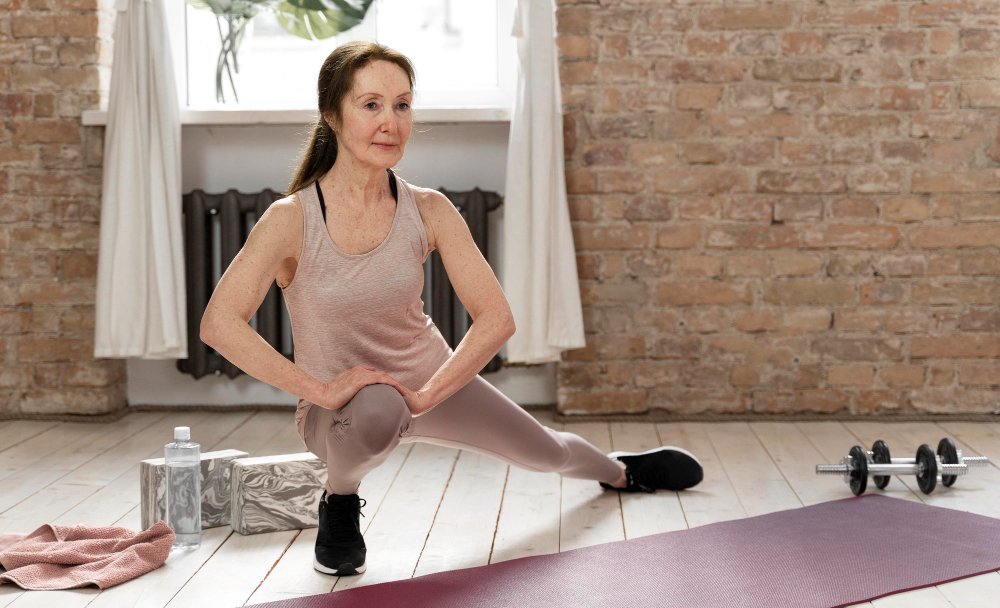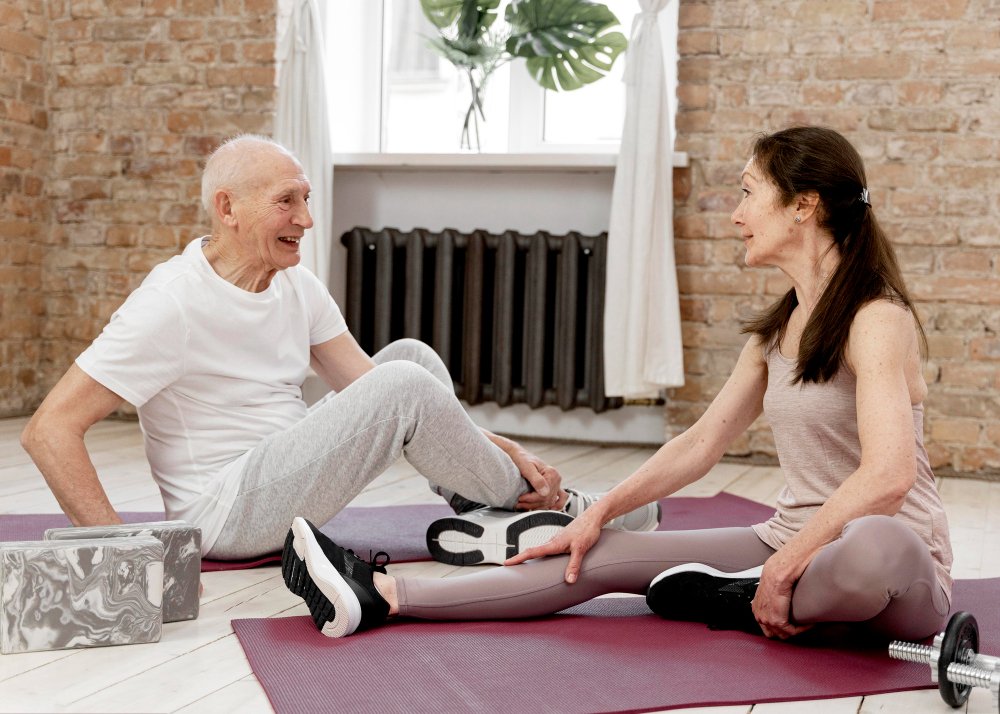Flexion vs Extension: Understanding Knee Movement and Osteoarthritis

Your knees rely on two main movements to function properly: flexion, which means bending the knee, and extension, which means straightening it.
These movements work together every time you walk, climb stairs, sit down, stand up, or get out of a car. Flexion allows you to lower your body or absorb impact, while extension helps you push off, stand tall, and move forward.
When either motion becomes limited, even by just a few degrees, your entire walking pattern can change. Over time, this leads to joint strain, muscle imbalances, and increased stress on the cartilage inside the knee.
These restrictions are often early signs of knee osteoarthritis, but they can also result from injury, swelling, or tight muscles around the joint.
Key facts about Flexion vs Extension knee movement:
- Flexion bends the knee to lower your body or absorb impact
- Extension straightens the knee to support standing and forward motion
- A healthy knee typically flexes to 120–140 degrees and extends to 0 degrees (or slightly beyond)
- Normal walking uses about 60 degrees of flexion, while stair climbing needs closer to 90 degrees
If your knee can’t bend or straighten fully, it could be a sign of joint stiffness, swelling, muscle tightness, or arthritis. These movement issues are especially common in people with knee osteoarthritis, where cartilage wears down and restricts smooth motion.
Keeping a full, balanced range of motion is key to protecting your knees. Simple exercises, lifestyle changes, and early treatment can help you stay active, reduce pain, and prevent long-term joint damage.
What Is Knee Flexion?
Knee flexion decreases the angle between the thigh and lower leg. When you bend your knee to sit down, tie your shoes, or squat, your hamstrings—the muscles at the back of your thigh—contract, and your quadriceps at the front relax.
A healthy knee can flex between 120 and 140 degrees. Walking typically requires about 60 degrees of flexion, climbing stairs needs around 90 degrees, and squatting may use as much as 115 degrees.
Muscles Involved in Flexion
- Hamstrings: The primary muscles (biceps femoris, semitendinosus, and semimembranosus) create flexion.
- Gastrocnemius: This calf muscle assists in bending the knee.
- Gracilis and sartorius: These hip muscles play a smaller role but help control movement.
What Is Knee Extension?
Extension increases the angle between the thigh and lower leg until the knee is straight. In some people, the joint hyperextends slightly beyond 0 degrees.
During extension, the quadriceps contract to straighten the leg while the hamstrings relax. This movement is essential for standing up, walking, running, and cycling. Even everyday activities like getting up from a chair or rising from a squat require strong knee extension.
Muscles Involved in Extension
- Quadriceps: The rectus femoris, vastus medialis, vastus intermedius, and vastus lateralis straighten the knee.
- Tensor fasciae latae: Assists with stability and alignment.
- Gluteus maximus: While primarily a hip extensor, it helps extend the leg when standing up from a squat.
Flexion vs Extension: Key Differences
| Feature | Flexion (Bending) | Extension (Straightening) |
|---|---|---|
| Primary muscles | Hamstrings contract; quadriceps relax | Quadriceps contract; hamstrings relax |
| Joint angle | Decreases to 120–140° | Increases to 0–5° |
| Daily activities | Sitting, squatting, kneeling, climbing stairs | Walking, standing, jumping, pedaling |
Both movements complement each other during functional tasks. When squatting, for example, you lower yourself by flexing your knees and then stand up by extending them. During walking, the knee continuously alternates between slight flexion and extension to accommodate foot strike and push‑off.
Why Range of Motion Matters

Full flexion and extension allow you to move smoothly and maintain proper alignment. Limited flexion might result from hamstring tightness, swelling within the joint, or scar tissue. Reduced extension can stem from quadriceps weakness, swelling, or joint pathologies such as osteoarthritis.
Even a loss of a few degrees of extension can alter your gait and cause the knee to feel stiff or locked. Range‑of‑motion testing is an important part of a knee evaluation with flexion vs extension.
Osteoarthritis and Range of Motion
Osteoarthritis is a “wear-and-tear” condition where cartilage gradually breaks down. As cartilage thins, bones rub against each other, causing pain, inflammation, and stiffness.
Bone spurs (osteophytes) may develop at the joint edges, further restricting movement. Fluid buildup can swell the joint capsule and limit flexion or extension. In malalignment conditions like knock knees or bowlegs, one side of the joint wears faster, causing uneven motion.
People with knee osteoarthritis often report morning stiffness that improves with movement but returns with prolonged activity. Explore more symptoms in our What Does Osteoarthritis Feel Like? article.
Symptoms of Osteoarthritis Affecting Flexion and Extension
- Aching or burning pain during movement
- Stiffness after sitting or waking up
- Grinding or popping sounds (crepitus)
- Swelling and warmth around the knee
- Difficulty fully bending or straightening the knee
Exercises to Maintain Flexion and Extension

Regular exercise keeps joints mobile and prevents stiffness. Here are some safe movements to support knee flexibility:
- Heel slides: Lie on your back and slowly slide one heel toward your buttocks, bending the knee as far as comfortable. Hold for a moment and then slide it back. Repeat 10–15 times on each side.
- Seated knee extensions: Sit with your feet flat on the floor. Straighten one leg until it is fully extended, hold for two seconds, and lower it slowly. Repeat 10–15 times.
- Standing hamstring stretches: Place your heel on a low stool, keep your knee slightly bent and hinge forward from the hips until you feel a gentle stretch in the back of your thigh. Hold for 20 seconds, repeat three times.
- Quad stretches: Stand on one foot, grab the opposite ankle behind you and gently pull your heel toward your buttocks. Hold for 20 seconds. Use a chair for balance if needed.
- Mini squats: Stand with your feet shoulder‑width apart, bend your knees about 30 degrees, then straighten. This strengthens the quadriceps without deep flexion.
Always warm up first and avoid pushing into pain. If you have arthritis, working with a physical therapist ensures you perform movements safely.
Protecting Your Knees
- Maintain a healthy weight: Extra pounds add stress to knee joints.
- Choose low‑impact activities: Swimming, cycling, and walking on flat surfaces reduce joint strain while keeping you active.
- Wear supportive shoes: Proper footwear cushions the joints and promotes good alignment.
- Strengthen hips and core: Strong hip and abdominal muscles support proper leg positioning, reducing knee stress.
A knee brace can provide stability and help control alignment. Learn about comfortable options on our knee brace for pain relief page. If stiffness and pain persist, explore our viscosupplementation and platelet‑rich plasma therapy services to see if they are right for you.
When to Seek Professional Help

Seek evaluation if you experience persistent knee pain, swelling, clicking or locking, or if you cannot fully bend or straighten your knee. Early diagnosis of osteoarthritis allows for timely treatments that can slow progression and improve quality of life. Our fluoroscopy‑guided treatments ensure precise injection placement for maximum relief.
Support Your Knees With Expert Care
Keeping a healthy balance between knee flexion and extension is key to staying mobile and pain-free. Simple steps like stretching, strengthening, and staying active can make a big difference in joint health. But if you’re finding it harder to bend, straighten, or move without discomfort, you don’t have to manage it alone.
Let our team at Arthritis Knee Pain Centers help you take control of your knee health. Schedule a no-charge, no-obligation knee screening to explore safe, non-surgical options tailored to your needs.
